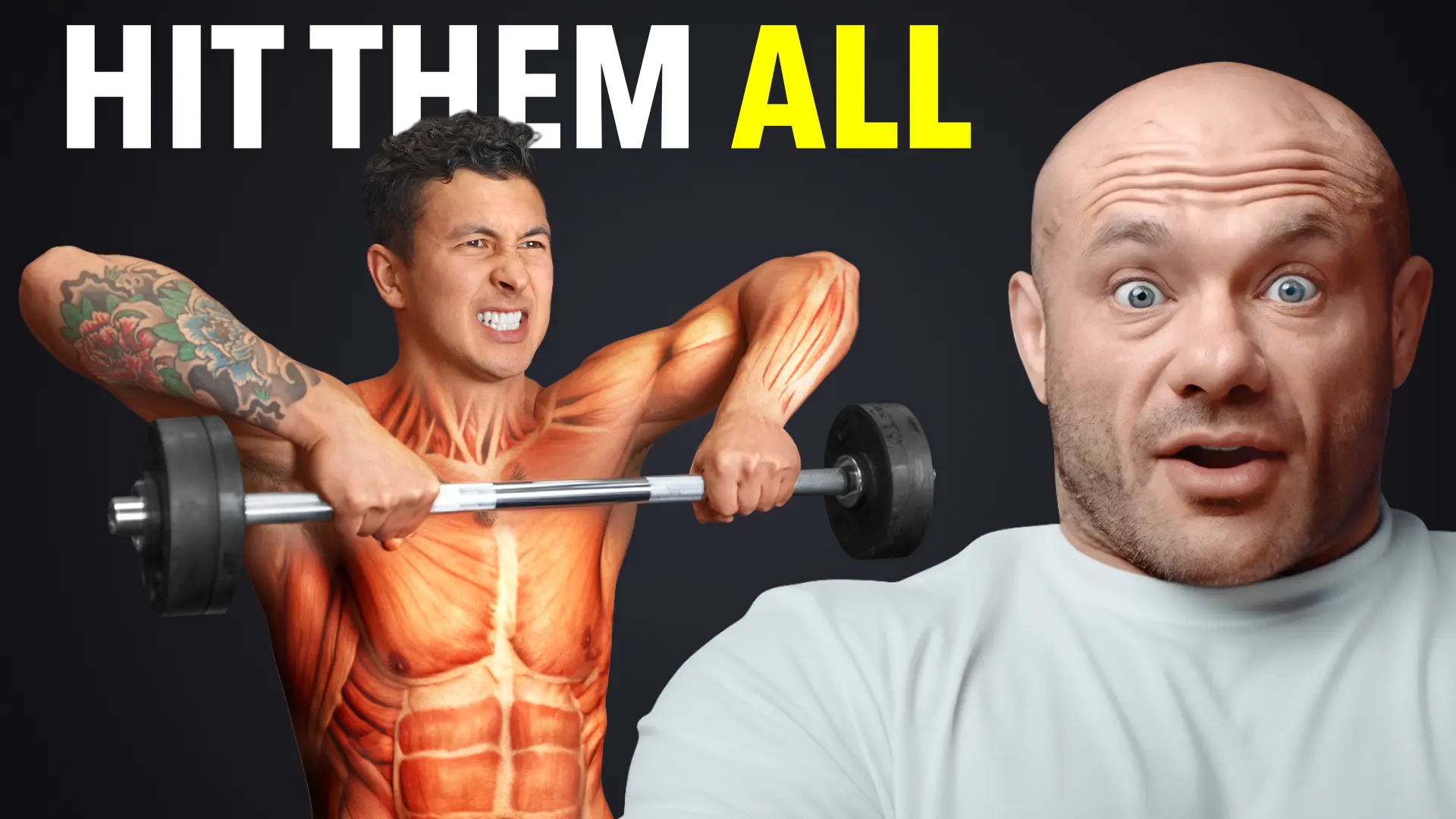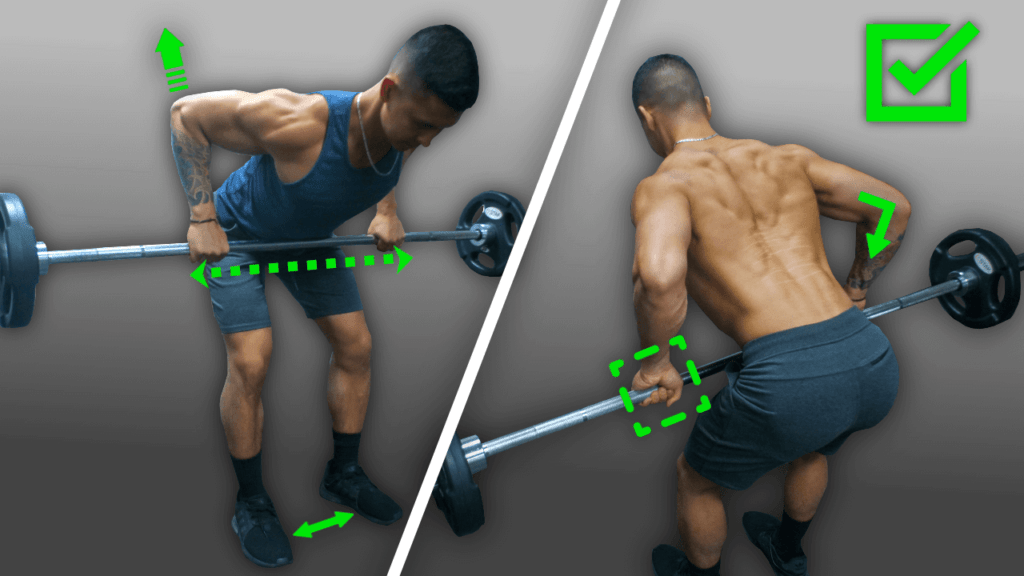
The Ultimate Guide On How To Do Barbell Rows To Build A Bigger Back
Have you always wondered how you could build a bigger and thicker back? Wonder no more. I'll walk you through a step-by-step tutorial that shows you exactly how to do barbell rows for maximal back growth.
It's not a secret. If you want a mean-looking back, you need to learn how to do barbell rows. The barbell row is one of the most effective exercises you can include in your back workout for thickness and width.
Researchers from this 2018 EMG analysis of various back exercises have even gone so far as to say:
"If a person had to choose one back exercise, the barbell row would be the best option, since it activates many of the back muscles to a greater degree than other back exercises."
Unfortunately, the bent-over barbell row is also one that many people get wrong.
And if you're one of them, not only would you stunt your back growth, but you would also risk serious injury, especially in the lower back region.
By the way: this applies to all muscle groups you're training - and are hoping to grow. That’s exactly why within my Built With Science programs, we’ve not only carefully selected each and every exercise included in your step-by-step routines, but we’ve also taken the time to create in-depth tutorials for each exercise, showing you how to perform them - so you experience the quickest gains possible, BUT safely. For more information:
Click the button below to take my analysis quiz to discover the best program for you:
↓
What muscles do bent-over rows work?
Let's take a step back for a second. Before I cover the proper barbell bent-over row technique, it's critical first to take a look at the muscle worked in this exercise.
The barbell bent-over row works the whole back. But the main muscles activated will be the latissimus dorsi (lats), the traps (both middle and lower), and the rear deltoids.
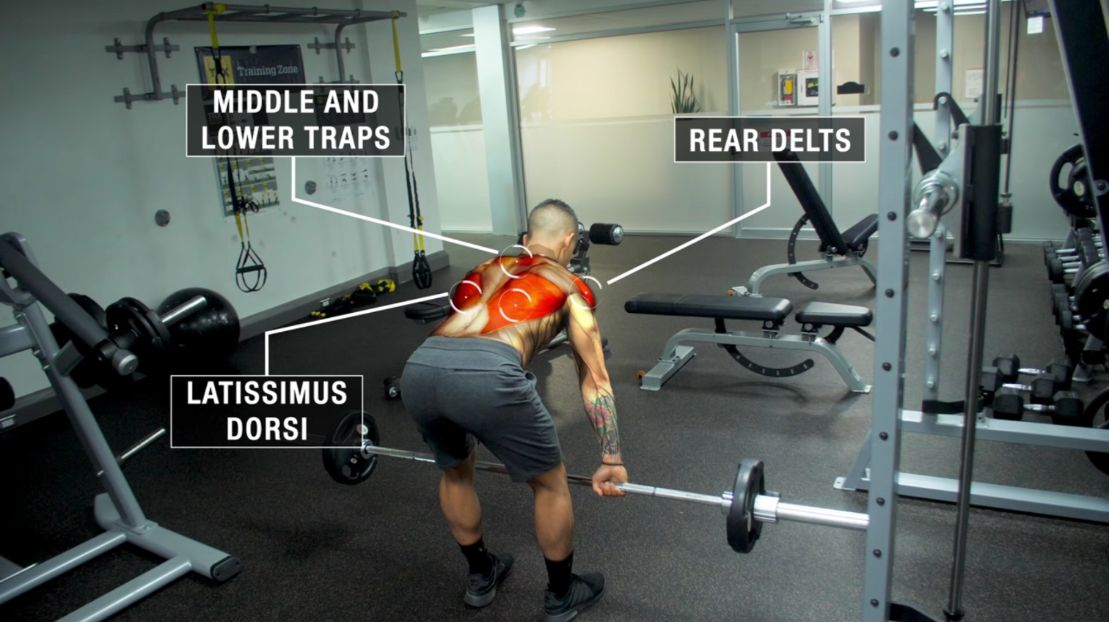 If you execute the bent-over barbell row with proper form, you should mainly feel these areas of your back working as you pull the weight.
If you execute the bent-over barbell row with proper form, you should mainly feel these areas of your back working as you pull the weight.
But you'll be able to target specific back muscles more than others if you make minor adjustments to your form.
And this, ultimately, depends on which back muscle you'd like to bring up. Both aesthetically and functionally.
Note that the lower back is heavily involved in the row as well; the lower back is responsible for the isometric contraction throughout the movement.
Now that you've gotten a good grasp on which back muscles the barbell row works, let's get into how to do bent-over rows properly.
How to do barbell rows
1) Setup
Let's first start with how you can optimally set up the barbell row. As you'll soon see, this step varies depending on both your stature and goals.
Feet placement
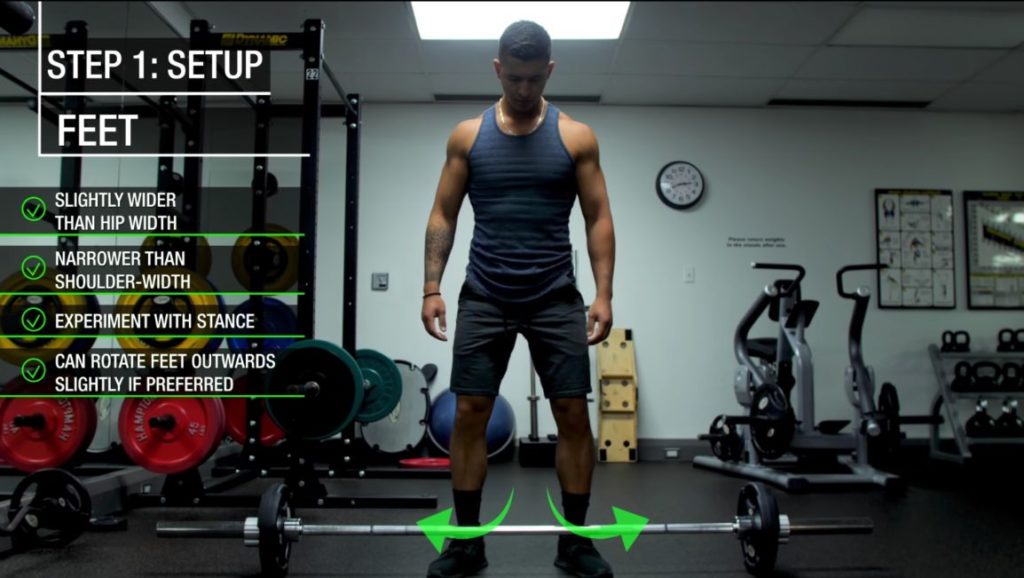
To begin, set up your feet right by placing them slightly wider than hip-width. In general, your feet stance should be narrower than shoulder-width.
But you can experiment with this; taller individuals tend to be better with a broader position.
You can also rotate your feet outwards slightly if this makes the movement more comfortable for you. When looking down, the bar should lay over your mid-foot to the toe area.
Grip placement
Width of your grip
It's now time to grip the bar. As a general rule, grip the bar just outside the width of your knees. You'd want to experiment with the width of your grip, depending on your training goals and what feels most comfortable.
For instance, a wide grip barbell row enables you to both pull the bar higher towards your sternum and flare the elbows out more.
The resulting more significant transverse extension will, therefore, hit more of the traps, rear delts, and overall upper back musculature.
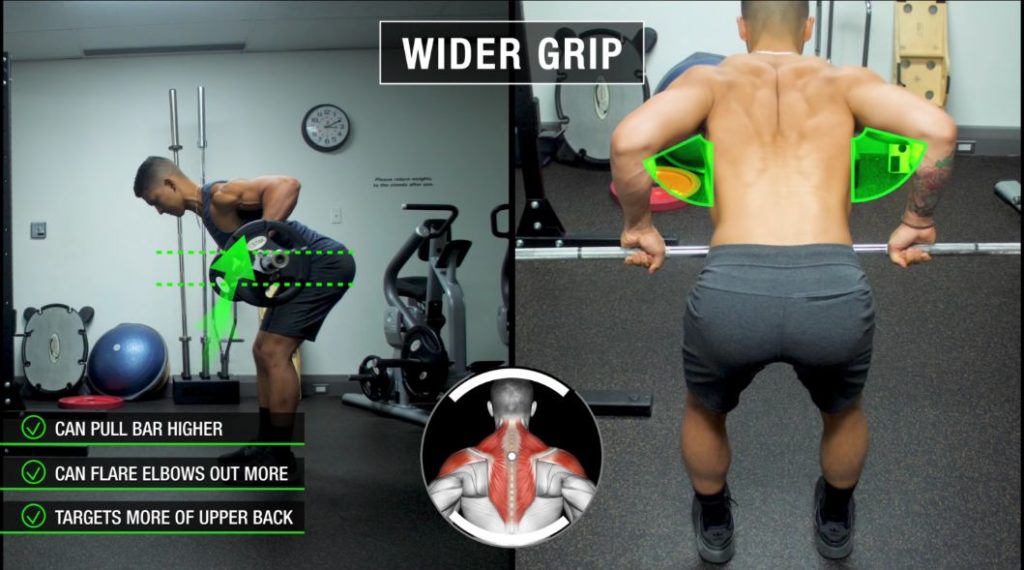
On the other hand, a narrower grip allows you to both pull the bar lower towards your belly button and tuck the elbows closer to your sides.
The greater shoulder extension involvement, therefore, puts your lats in a more mechanically advantageous position. You will prioritize your lats' development in this variant.
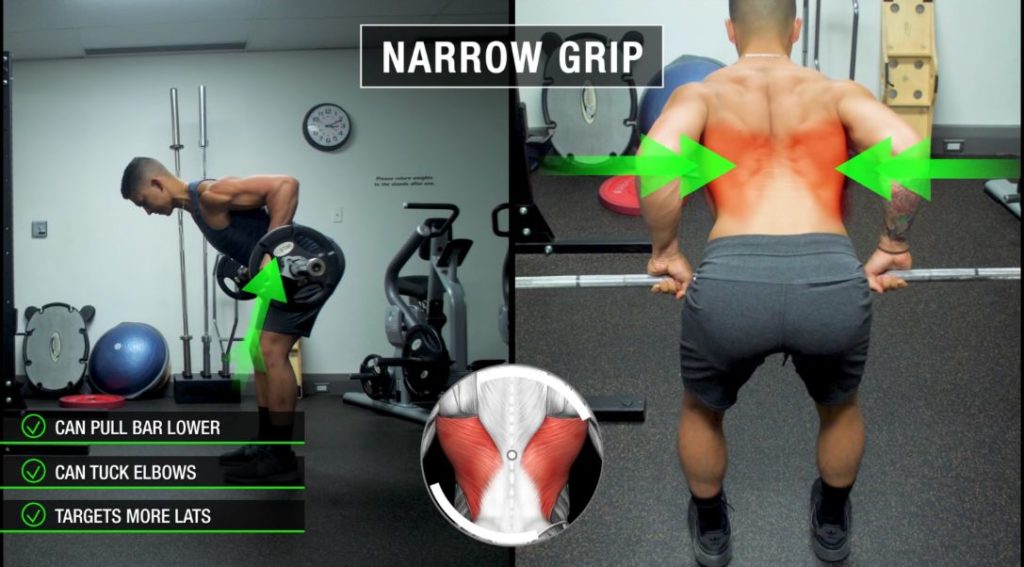
Underhand or overhand grip
But - what about whether you should go with an underhand or overhand grip?
An underhand grip barbell row allows you to tuck the elbows even closer to your sides. Hence, you'll prioritize your lats more, but this enhanced involvement does come at the cost of greater biceps activation.
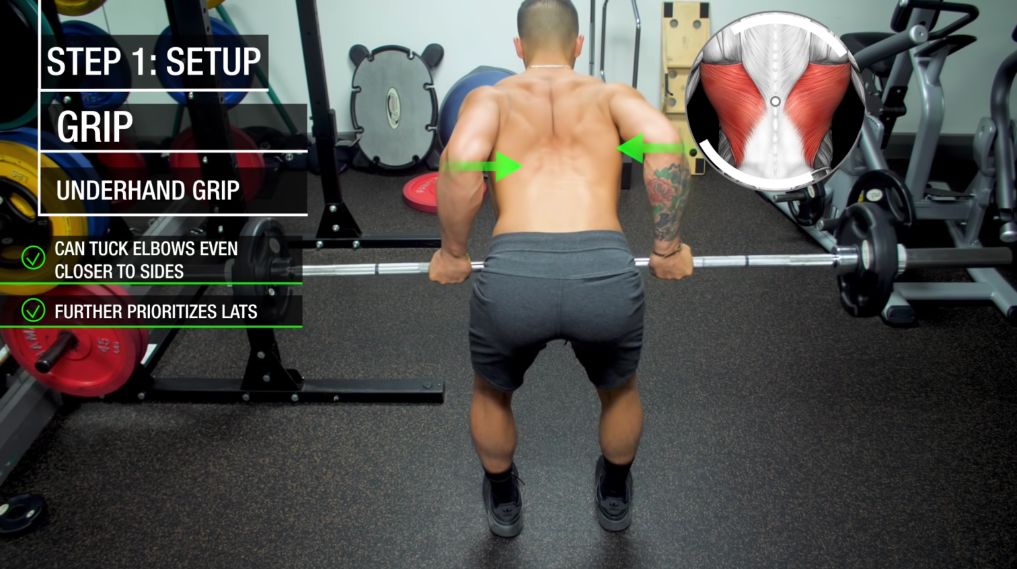
You can see evidence of this increased biceps involvement in an extensive EMG Analysis performed by Bret Contreras back in 2010.
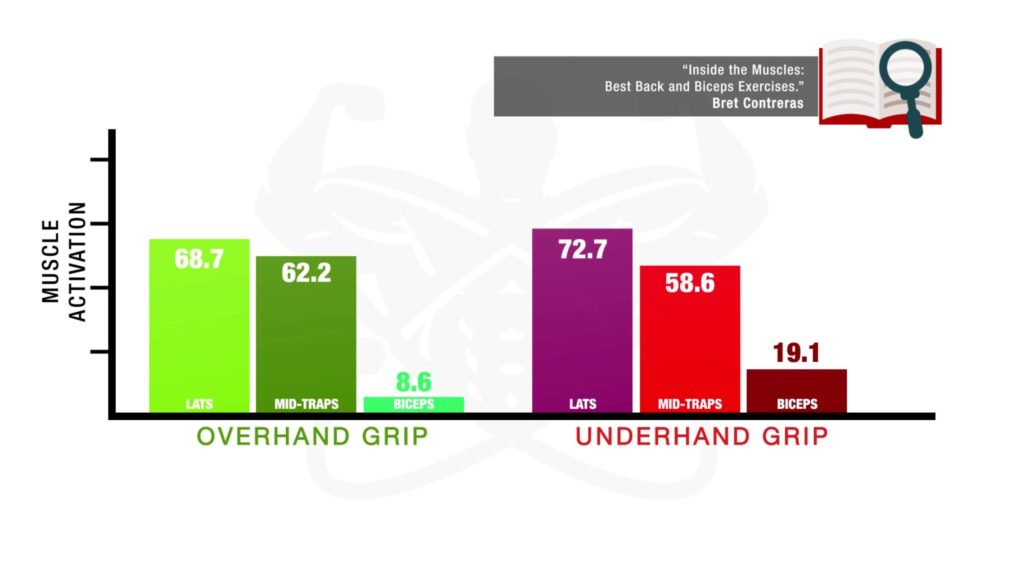
Therefore, depending on your personal training goals, I have two recommendations.
- You have specific muscles you want to prioritize - Perform the variation that targets the muscles you want to bring up more.
- You want a balanced back development - Perform a couple sets of both variations.
In any case, though, avoid going too narrow. An excessively narrow grip will cause your forearms to come out of proper alignment, leading to increased wrist and elbow stress.
On the contrary, going too wide will cause unwanted excessive flaring of your elbows.
I'll stick to using a wider overhand grip in this article, but note that the same steps and tips apply for whichever grip variation you choose.
Starting position
The starting position is arguably the most crucial one when it comes to learning how to do barbell rows. You can get into the proper starting position by deadlifting the weight up into a standing position. Ensure that you keep your back neutral as you do so.
Next, push your hips back with a slight bend in your knees, while lowering the barbell down. You want to stop at the point where the flexibility of your hamstrings prevents you from going any further without rounding your back.
For most people, this will be somewhere around a 15 to 45-degree angle.
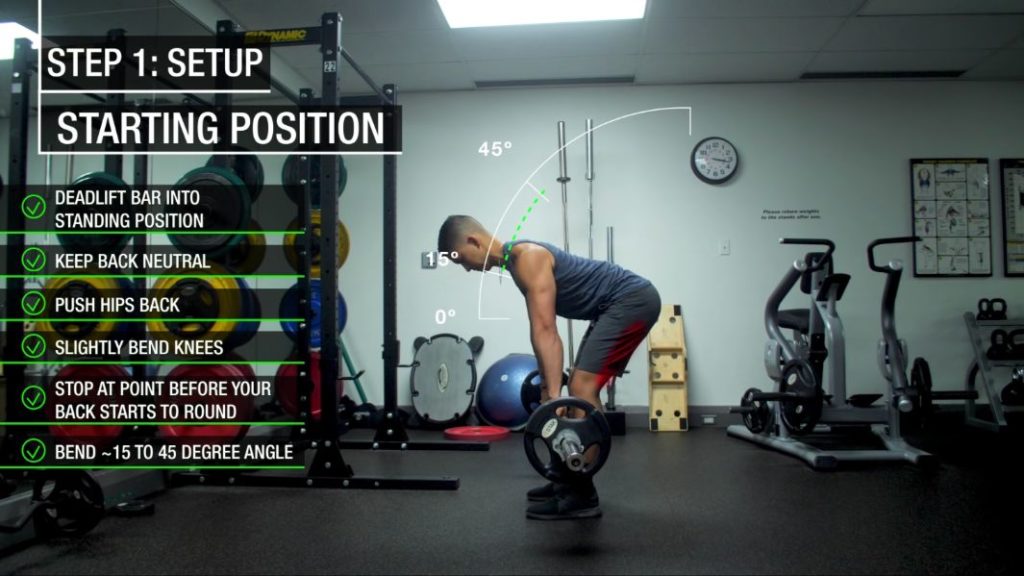
But as your flexibility improves and you become more proficient with how to do barbell rows, you can gradually attempt to get more parallel to the ground. The increase in range of motion allows you to work the back more effectively.
Common starting position mistakes
Here are two common mistakes to avoid when getting into the starting position:
- Avoid performing the movement too upright; this will emphasize your upper traps rather than your back. Your bent over barbell row will essentially become a shrug.
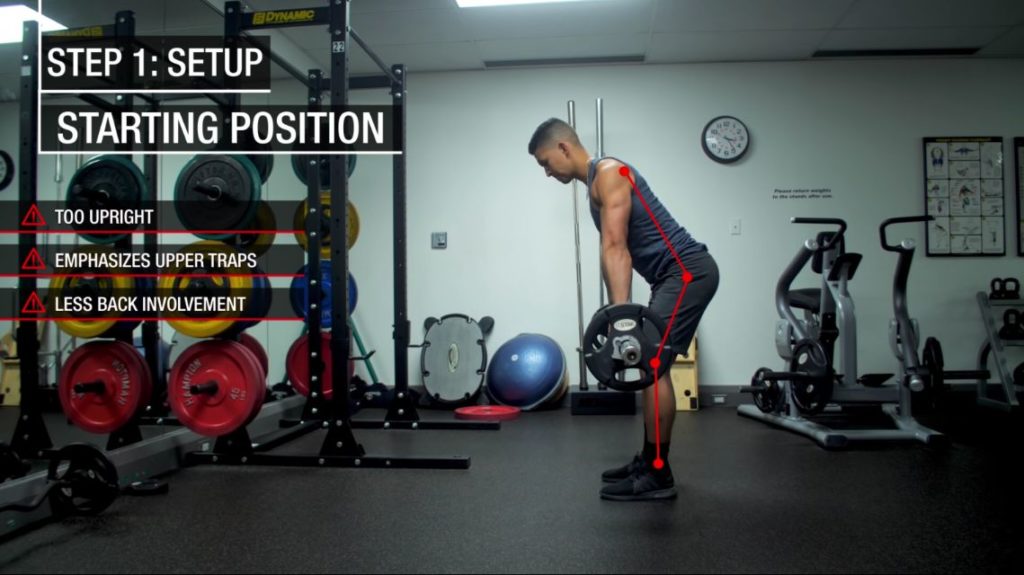
- Avoid going past your range of hamstring flexibility. When you get too low, your back rounds. And as a result, you'd be placing a significant amount of stress on your lower back. Always stick to your range of flexibility, so your back remains neutral throughout.
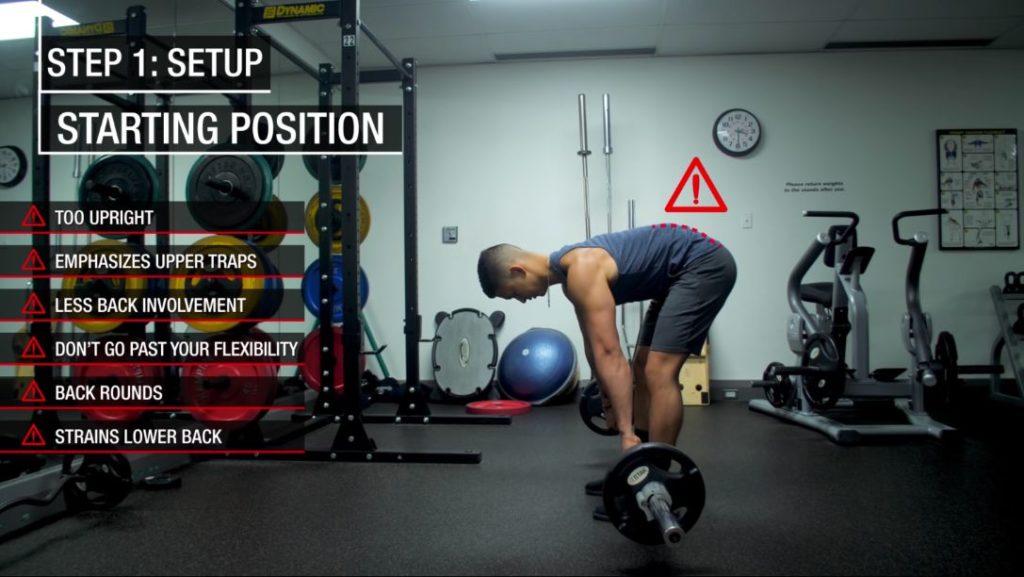
Once you're in the starting position, that's it for the setup. You're now ready for step 2 of how to do barbell rows.
If you're enjoying this step-by-step guide for proper exercise execution, you're going to love our 2-on-1 coaching program. You are going to have a coach who'll focus solely on your training and making sure you perform every single exercise in your customized workout sessions optimally (and safely!) for muscle growth. Plus, a dietitian and I will also be available to guide you every step of the way. If that sounds good to you, then:
Click the button below to find out more about the 2-on-1 coaching program:
↓
2) The row (concentric movement)
First, keep your core tight by contracting your abs. You can do so by imagining that someone is just about your punch your stomach.
Then, you should row the weight up while thinking about driving your elbows up and slightly back. Stop the motion when the bar is just about to touch your torso.
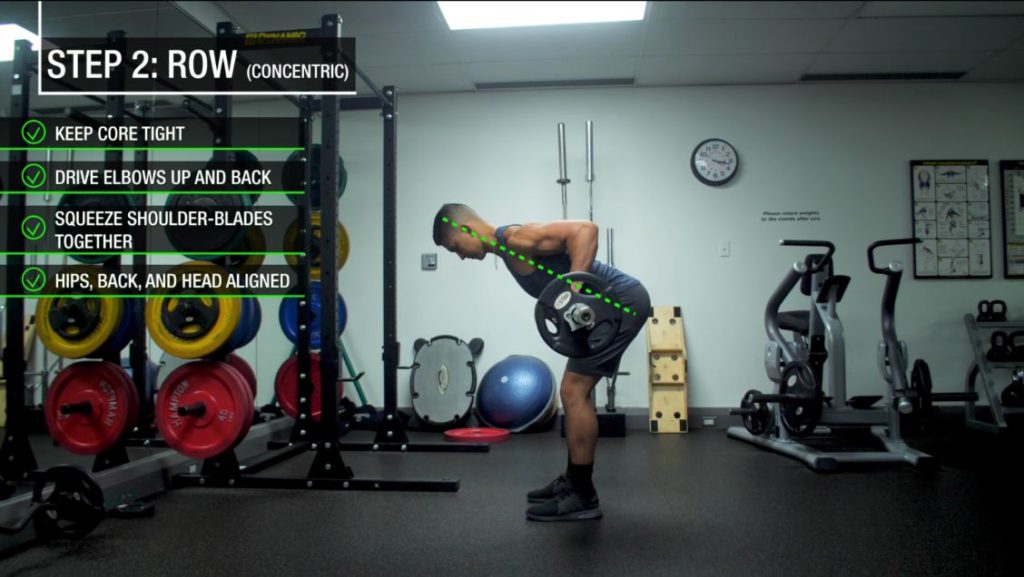
And as mentioned earlier, where the barbell comes into contact with your body depends on your grips:
- Narrow, underhand barbell row - The bar should touch lower on your body, around the area of your belly button. Your elbows should also be tucked closer to your sides.
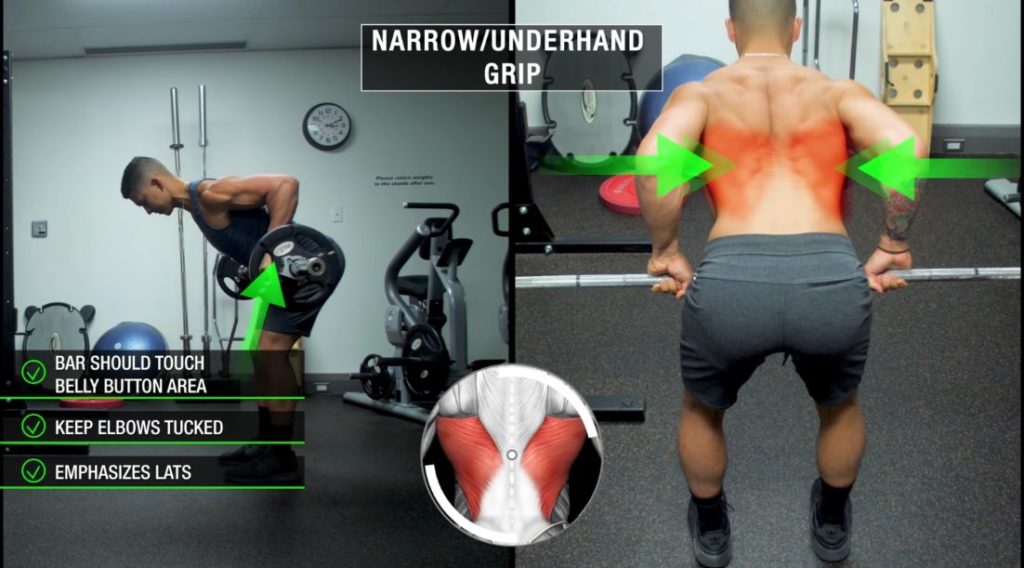
- Wider, overhand barbell row - The bar should tough higher on your body, around the are of your sternum. Your elbows should be (roughly) at a 45-degrees angle.
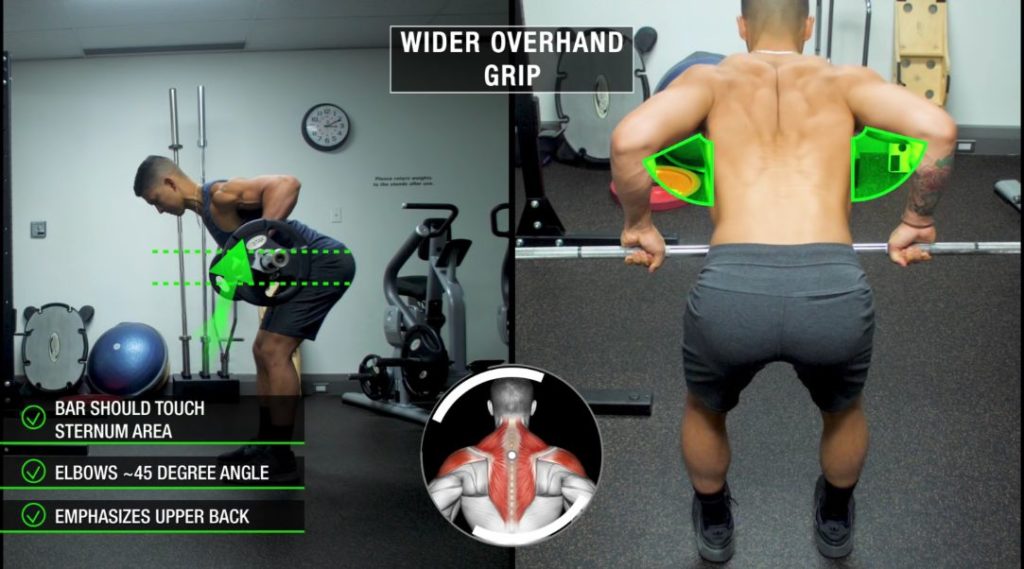
Regardless of which variation you perform, you should always squeeze your shoulder blades together as you row the weight up. Also, your hips, back, and head should be aligned at the top position.
Common rowing (concentric) mistakes
Some things to avoid as you perform the bent-over barbell row are:
- Avoid pulling the bar too high and flaring the elbows out. If you do so, you'll shift tension to your upper traps and put your shoulders in a compromised position.
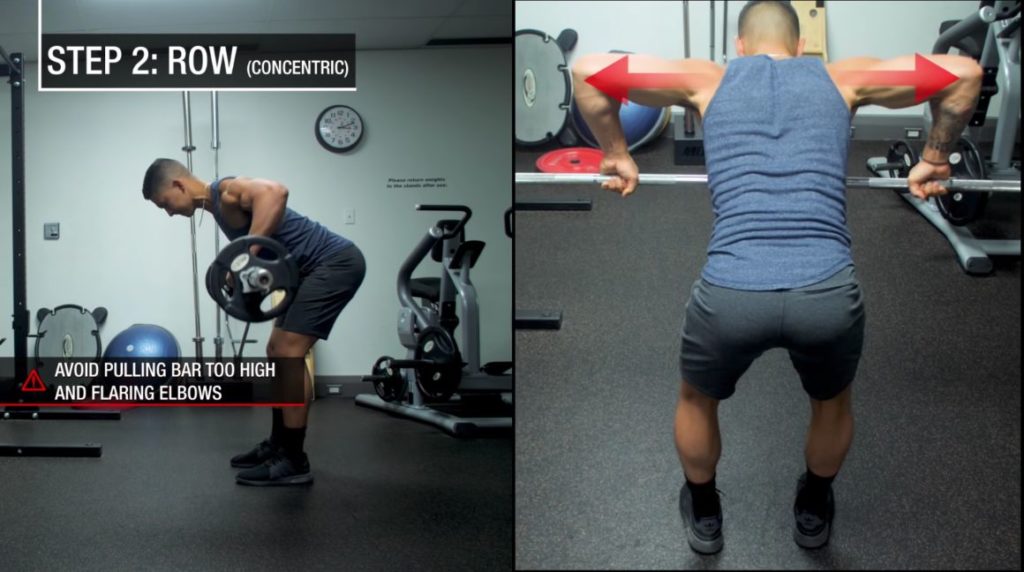
- Avoid excessively rounding your back as you perform the barbell bent-over row. Instead, keep your chest up and engaged core to maintain a neutral back.
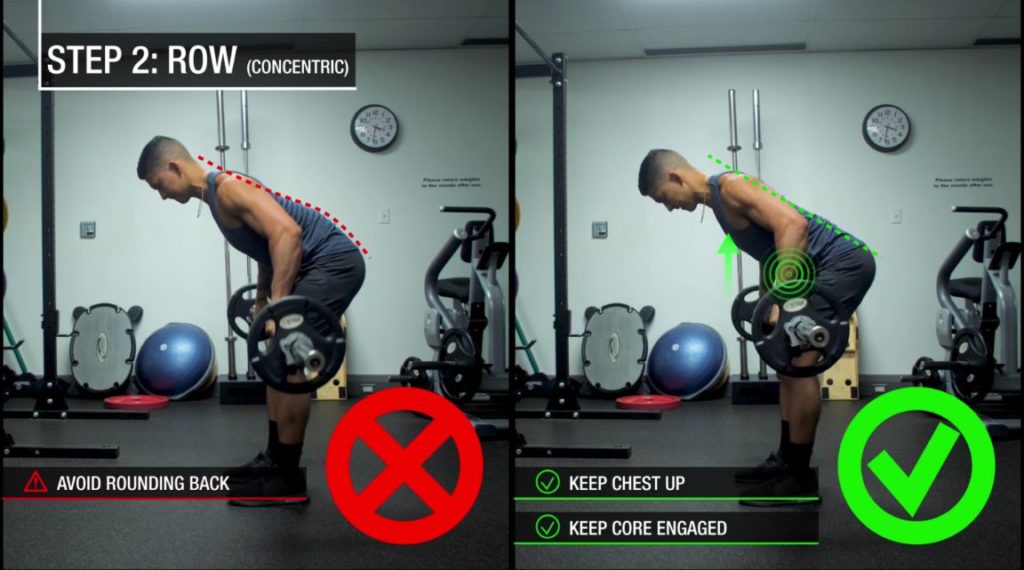
- Avoid letting your shoulders roll forward as you row the weight up; this internally rotates your shoulders. Instead, lighten your weights. Focus on pulling the shoulders back and squeezing the shoulder blades together.
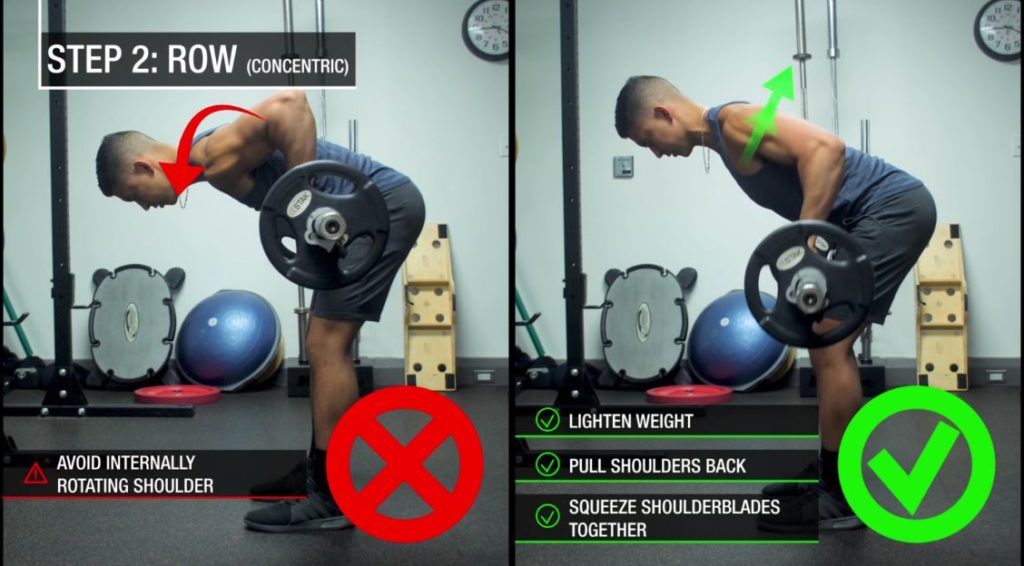
Once you've rowed the weight up, it's time for the descent back to your starting position.
3) The descent (eccentric row)
Finally - the last step on learning how to do barbell rows. Nearly there!
Here, you want to keep your core engaged and maintain the alignment of your hip, back, and head while lowering the weight back down. Continue the movement until your arms are straight.
As you lower the weight, you want to let your scapula naturally protract outwards rather than keeping them squeezed together.
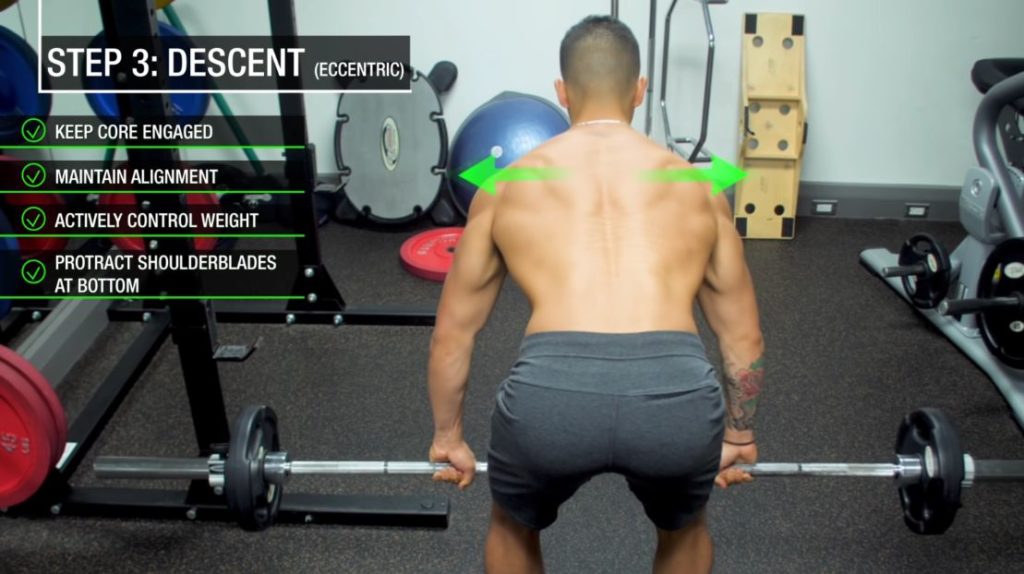
At the bottom position, you should activate your triceps (contract them) to minimize biceps involvement, while maximizing the activation of your back, before initiating the next rep.
Why? Well, it's all because of the concept known as reciprocal inhibition.
Common rowing (eccentric) mistakes
Here are some things to avoid during the descent of the barbell bent-over row:
- Avoid letting your back round and fall out of proper alignment.
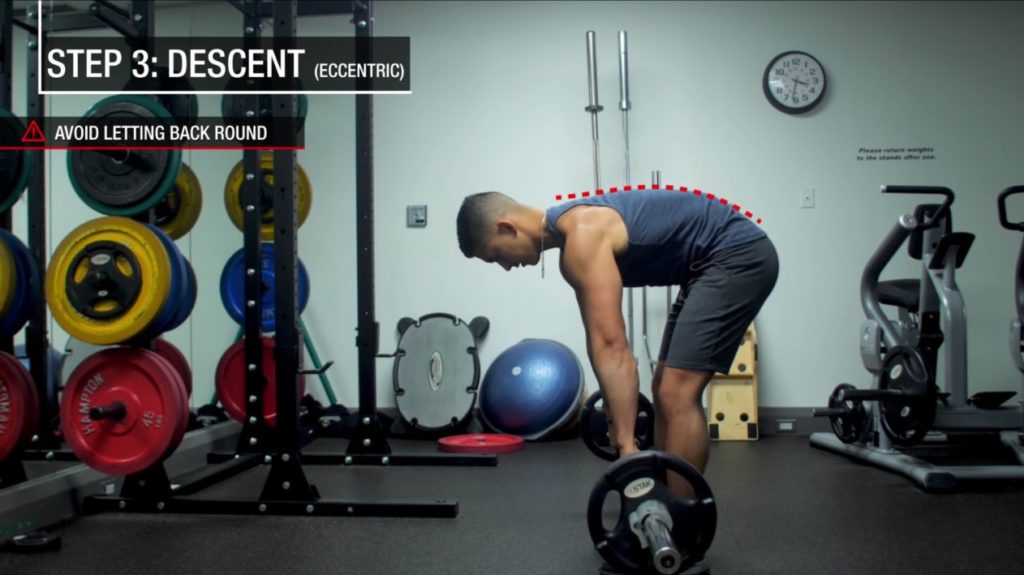
- Avoid simply dropping the weight. You should actively control the eccentric portion of the lift as this is a significant contributing factor to muscle growth.
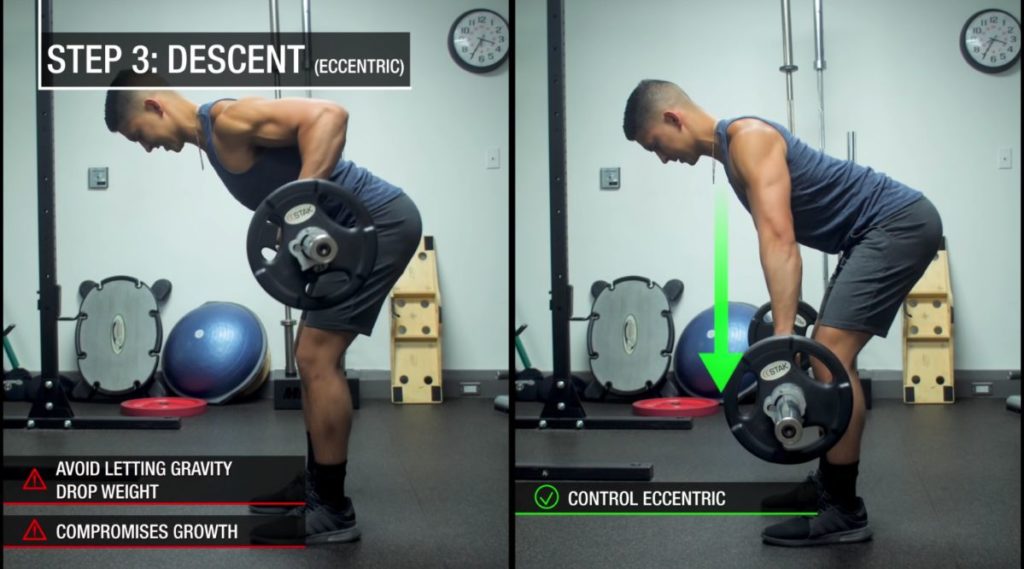
After the descent, you've completed one rep of the barbell row. You can now continue performing the rest of your required reps in a controlled fashion, using the tips I've outlined.
Bonus tips
Now that you understand how to do barbell rows with proper form, here are some additional tips you should also be aware of.
Sets and repsTo implement the barbell row into your routine, I'd suggest adding 3-4 sets of the exercise with a rep range of around 8-12 reps. Lift moderate to heavy in the beginning.
But feel free to use a higher rep range of 10-15 reps and lighter weights if you think that enables you to feel activation in your back muscles better.
Lower back demands
If the bent-over barbell row is too straining on your lower back, you can perform the exercise off the rack instead.
Let the weights rest on the rack after each rep - this will reduce the amount of work your lower back needs to do.
Also, this modification enables you to work your upper back better — a win-win situation.
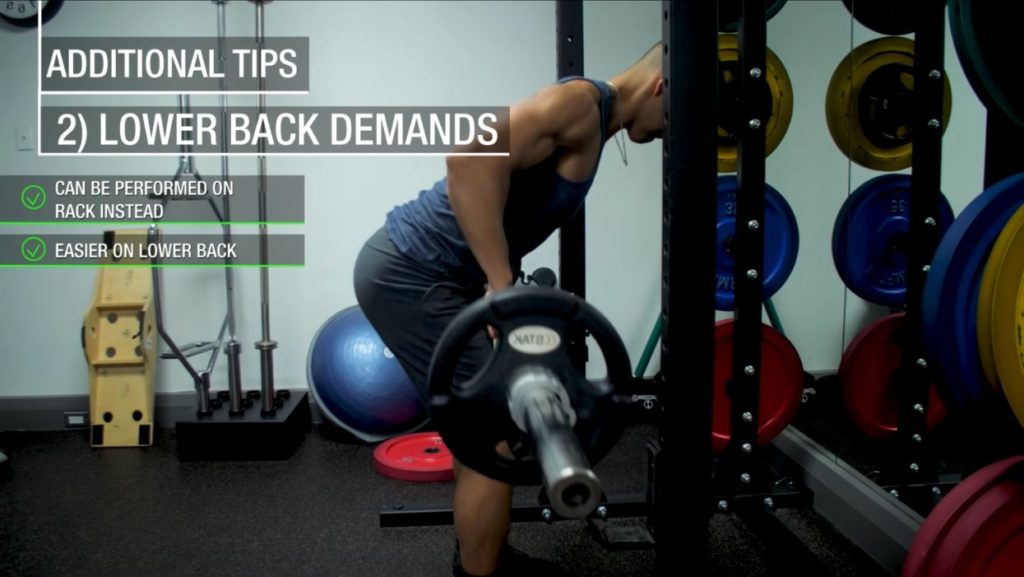
It's all about proper form
And there you have it - you now know how to do barbell rows with an impeccable form!
If you want to build an even meaner-looking back, you might want to check out this article that teaches you everything I know about growing a wider back - fast.
Ultimately, it's crucial to know that the knowledge of which exercise helps build muscle the fastest, or what to eat after a workout, would be useless if you don't execute it with the proper form.
Not only would you be holding yourself back in terms of muscle gains, but you'd also risk getting injured.
You don't want to miss out on training sessions for months on end because of a slipped disc, do you?
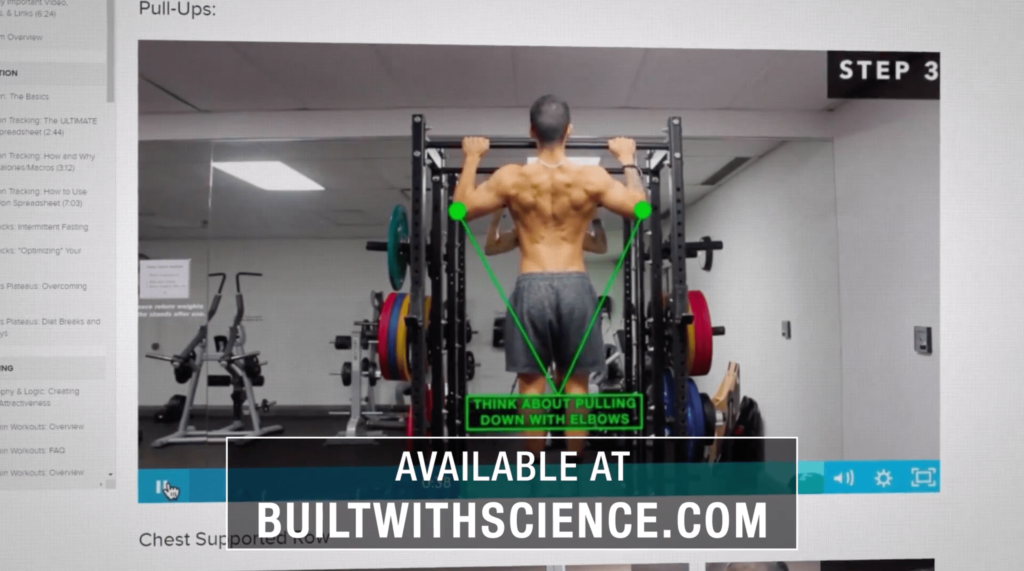
This is precisely why within my Built With Science programs, we’ve not only carefully selected every exercise included in your step-by-step routines, but we’ve also taken the time to create in-depth tutorials for each exercise. My programs enable you to build muscle as effectively as possible with carefully-chosen exercises. They also help you avoid injuries!
Click the button below to take my analysis quiz to discover the best program for you:
↓
I hope you enjoyed this article and found it useful! Don’t forget to give me a follow and connect with me on Instagram, Facebook, and Youtube as well, in order to stay up to date with my content. Cheers!


